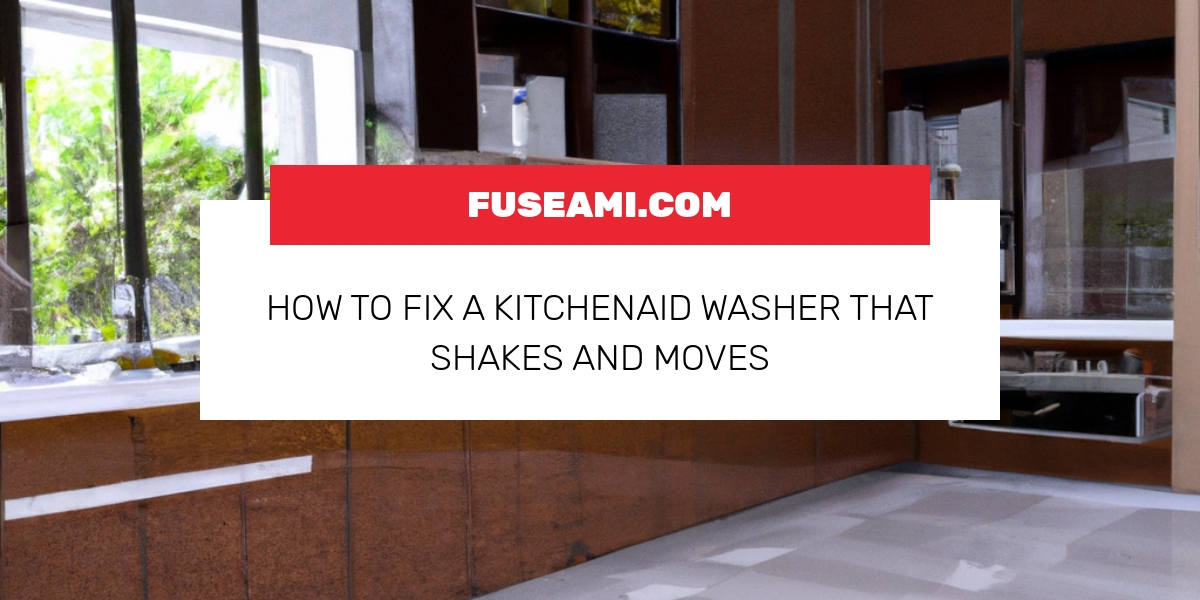Shock Absorber
To get to the shock absorbers, also known as the struts, you’ll have remove the front or rear panels. Washers can shake or move when they’re not weighed properly. Shock absorbers that have been damaged or weak will result in the machine making loud noises during spin cycles. It is imperative to fix the problem immediately. How do you test the shock absorbers inside the KitchenAid washing machine.
1. Before you start washing your clothes, disconnect the machine.
2. Find the shock absorbers. You’ll have to remove the front or rear panel off depending on which model you have.
3. Check shock absorbers for worn attachments, weak dampening action or leaks. 4. It is recommended to change the shock absorbers If you are experiencing any of the symptoms. Both shocks should be replaced simultaneously.
Suspension spring and tub spring
The tub assembly in your KitchenAid washing machine is held in place or fixed from its base thanks to its suspension springs. They absorb the vibrations generated by spinning cycles of KitchenAid washing machines and also absorb the vibrations. Sometimes, these springs become bent or damaged, or they can break off creating excessive noise and vibration during spin cycles. How to examine the suspension spring of a KitchenAid washing machine
1. Before starting, turn off the power supply.
2. To gain access to the suspension springs, remove the top or front panels of the KitchenAid washing machine.
3. Check for damage or stretching and make sure they’re secure on both sides. Be careful when replacing springs that are already under tension. Always wear safety gear.
4. Replacement suspension springs are necessary if you notice any damage, stretching, wear. If you find any suspension springs damaged, we suggest replacing them all at once. They wear around the same speed.
Snubber Ring and Damper Pad & Tube Wear Pads
A snubber rings is an option that reduces the vibrations of KitchenAid washing machines during spin cycles. It’s typically located near the bottom of your machine and acts as an insulator between the tub support and base. Most tub wear pads and snubber ring components are made from hard plastic. Some damper pads are composed from lubricated felt. Every style eventually wears out and allow the tub to move excessively. They could also become too weak to support the tub. The washer could shake out of control in these situations. How to check the damper pad within your KitchenAid washing machine:
1. Unplug the machine and remove the front panel.
2. Find and inspect the snubber. To examine the snubber you’ll need to pull off the tub springs.
3. You will find white dust around or in the vicinity of the plastic-style snubber. Be on the lookout for dry or dislodged pad materials when using the felt type. If you have any of these symptoms you’ll need to replace your nubber ring.
Tub Dampening Strap
Top Load washers with tub dampening bands are utilized to cushion tub movement throughout spin cycles. Four straps are secured to the tub’s top and corner corners. A normal usage may result in the straps’ rubber to wear out. If the straps become stretched or damaged, the tub may be in contact with the cabinet during the spin. This can cause the washer to move, shake and make a loud banging noise. The straps can become stiffer when the washer is used often and with heavy loads. This could cause premature failure. How to check the dampening buckles of the tub in washers. Start by disconnecting the washer.
1.Next, look inside the cabinet and you will find the tub dampening straps.
2. Each strap will be connected to the tub and one corner of the cabinet. Be sure to inspect the tub dampening slings for any signs of wear, damage, fraying or any the possibility of damage.
3. If you suffer from any of these symptoms, you’ll need four replacement tub dampening bands. It is suggested that all four straps be replaced immediately since they wear in a similar manner.
Support Legs for the washer
Leveling Legs for the washer assist in supporting it. They can be adjusted so that it can be leveled. Certain models come with four threaded legs, whereas others include two threaded and two self-leveling back legs. If your machine shakes or shakes during the spin cycle, you should ensure it is level and securely seated on all four legs. How can you check the legs that level the KitchenAid washing machine? This repair does not require you to disassemble your appliance.
- However it is suggested that you disconnect the appliance before you begin.
- To reach the feet, tilt the washer machine either to the side or reverse.
- First, make sure all leveling feet are equal. If you notice that one of the feet that are level is not level, you can run an experiment. If the issue continues, look for damage or wear to the feet. Ensure that your feet are threaded. If you are experiencing any of these issues, Replacement leveling feet may be necessary.



